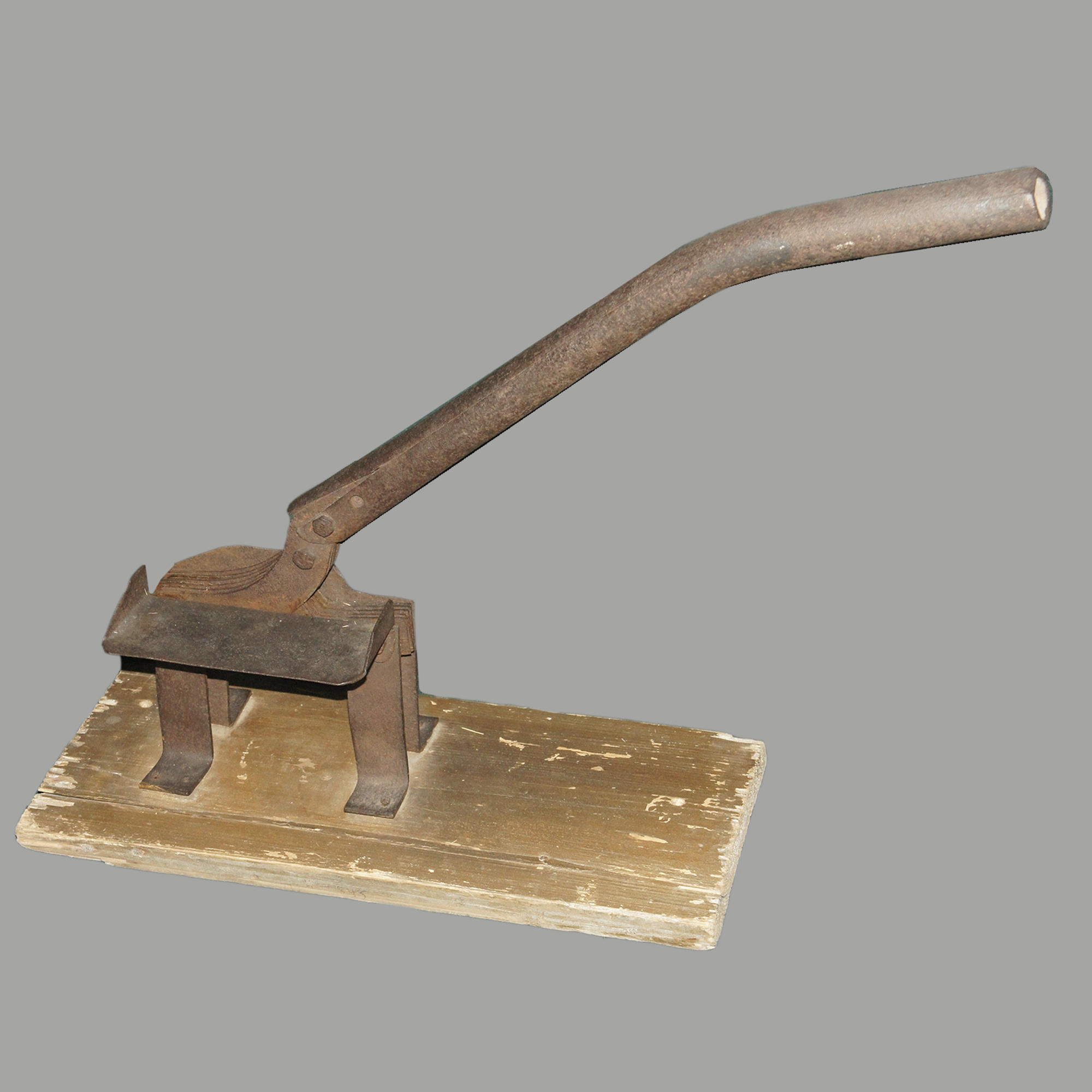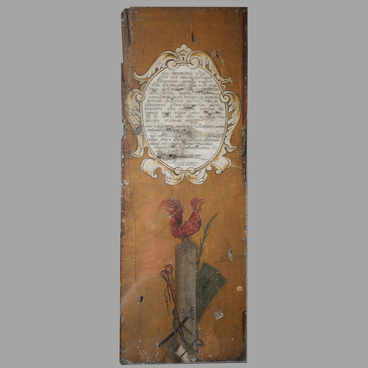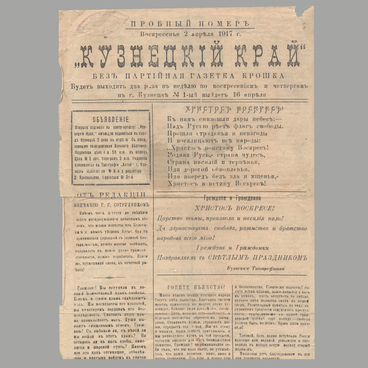Tobacco cutters in the olden days were intended for cutting tobacco leaves.
The metal tobacco cutter demonstrated in the exposition is fixed on a wooden base in the form of a rectangular board. The mechanism of the cutter is a cutting device, which consists of five fixed saw-edged plates and four upper moving plates, which are attached to a metal handle. Tobacco leaves are to be cut by moving the handle towards the fixed plates on which the tobacco leaves are placed. Devices of similar type for cutting tobacco leaves were made in small blacksmiths shops of Kuznetsk to the order of the city residents.
Tobacco cutters have become very popular among the residents of Kuznetsk, because since the end of the 18th century tobacco cultivation had become one of the income items of a significant part of the population of the city. Tobacco cultivation required a lot of labor effort, and a lot of water, which was difficult to supply during the dry years. The harvest - tobacco leaves – would be bundled and dried. Then the dried bundles were baled – forming tobacco-leaf bundlings - and sent by local merchants for sale to Tomsk or Barnaul. A small part of the tobacco was left for their own use. That’s where the tobacco cutter was needed to cut tobacco leaves for smoking. In the 1920s, during the NEP years, even factory production of tobacco and shag tobacco was organized in Kuznetsk. Truly speaking, it was still a semi-handicraft factory, and the main work was done manually, but the scale of production was impressive. Tens of thousands of labels were glued to the packs made in Kuznetsk at the local factory and dispersed throughout the region.
The Shors were a large tobacco consumer among whom smoking had become a common bad habit. Almost everyone smoked among them, including women and teenagers. However, at the end of the 19th and beginning of the 20th centuries even in Kuznetsk, smoking tobacco by women was considered to be a very “fashionable” phenomenon, and many Kuznetsk “first ladies” abused tobacco.
The metal tobacco cutter demonstrated in the exposition is fixed on a wooden base in the form of a rectangular board. The mechanism of the cutter is a cutting device, which consists of five fixed saw-edged plates and four upper moving plates, which are attached to a metal handle. Tobacco leaves are to be cut by moving the handle towards the fixed plates on which the tobacco leaves are placed. Devices of similar type for cutting tobacco leaves were made in small blacksmiths shops of Kuznetsk to the order of the city residents.
Tobacco cutters have become very popular among the residents of Kuznetsk, because since the end of the 18th century tobacco cultivation had become one of the income items of a significant part of the population of the city. Tobacco cultivation required a lot of labor effort, and a lot of water, which was difficult to supply during the dry years. The harvest - tobacco leaves – would be bundled and dried. Then the dried bundles were baled – forming tobacco-leaf bundlings - and sent by local merchants for sale to Tomsk or Barnaul. A small part of the tobacco was left for their own use. That’s where the tobacco cutter was needed to cut tobacco leaves for smoking. In the 1920s, during the NEP years, even factory production of tobacco and shag tobacco was organized in Kuznetsk. Truly speaking, it was still a semi-handicraft factory, and the main work was done manually, but the scale of production was impressive. Tens of thousands of labels were glued to the packs made in Kuznetsk at the local factory and dispersed throughout the region.
The Shors were a large tobacco consumer among whom smoking had become a common bad habit. Almost everyone smoked among them, including women and teenagers. However, at the end of the 19th and beginning of the 20th centuries even in Kuznetsk, smoking tobacco by women was considered to be a very “fashionable” phenomenon, and many Kuznetsk “first ladies” abused tobacco.


